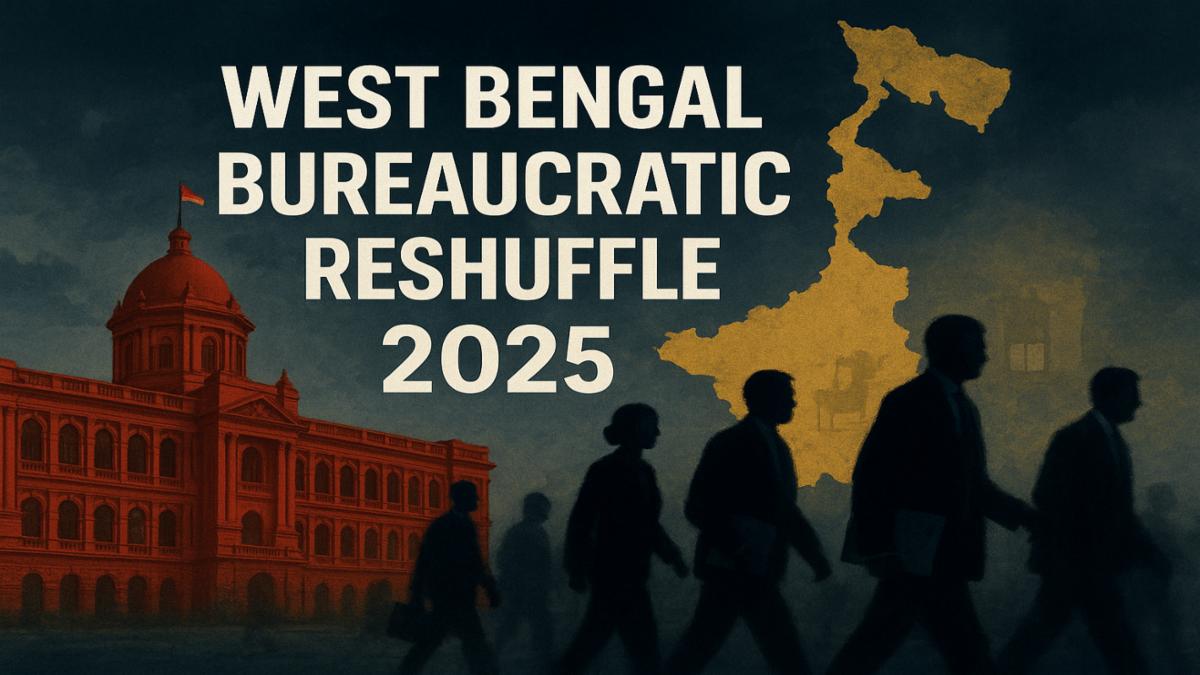Article Body
Bureaucratic Storm in Bengal: 500 + Transfers Amid SIR Buzz
Kolkata, November 1, 2025 – In a dramatic administrative move, the government of West Bengal on Monday approved a sweeping transfer of approximately 500 civil-service officers, including 67 IAS officers and 14 district magistrates. The timing of the mass reshuffle—days ahead of the Election Commission of India’s launch of the Special Intensive Revision (SIR) of electoral rolls in the state—has stirred both intrigue and concern across political corridors. The Economic Times
At first glance, the transfers could be viewed as routine housekeeping. But insiders suggest a deeper calculus is at play: aligning senior officials in key districts, strengthening administrative control ahead of electoral churn and ensuring machinery is in sync with state government priorities.
Who Moved, What Changed, Where It Mattered
The reshuffle spans across departments and districts. Several long-staying IAS officers were redeployed to politically sensitive areas, while new postings of district magistrates appear to coincide with constituencies expected to see fierce action in the upcoming polls.
One senior state official, speaking on condition of anonymity, observed:
“When the number of transfers crosses the hundreds, multiple things are at work — not just performance but positioning.”
Parallel movements at the West Bengal Civil Service (Executive) level, and adjustments in sub-divisional and block-level leadership reflect the scale of the change. Some observers note that repeated reshuffling can erode institutional memory — but in electoral terms, it may also ensure fresh allegiances and locally responsive administration.
The SIR Factor: Electoral Rolls, Booths and Bureaucracy
The SIR process—mandated by the Election Commission—puts booth-level officers, mapping data, and voter verification at the heart of the electoral machinery. In West Bengal, the state has already seen intensified activity: block-level officials have resumed duty; the Chief Electoral Officer’s website reportedly logged over one crore hits as data-verification commenced. The Economic Times+1
The reshuffle is synchronised with this timeline. Politicians from both sides perceive it as part of an electoral infrastructure race.
The ruling All India Trinamool Congress (TMC) frames the SIR and these transfers as defensive steps to safeguard genuine voters from deletion. Meanwhile, the opposition argues the machinery is being re-engineered to tilt the playing field.
Political Ripples: TMC vs BJP
For the TMC, the makeover is a strategic manoeuvre. Party insiders describe it as positioning trusted officers ahead of heavy-weight moves in 2026. The party’s leadership has reiterated its commitment to thwart any roll-manipulation.
On the other hand, the Bharatiya Janata Party (BJP) in Bengal is taking aim. State leadership labels the reshuffle a “state-sponsored exercise to stack the deck” before the SIR begins — a claim the government denies.
The timing of announcements, the magnitude of transfers and their proximity to electoral tasks have made the movement seem more than administrative drift. The political temperature in Bengal continues to rise.
What It Means for Governance, Not Just Elections
Beyond the electoral optics, such a large-scale reshuffle has governance implications:
-
Administrative Continuity: Frequent transfers may disrupt project delivery and institutional expertise.
-
Local Morale: Officers re-posted to new roles may face adjustment and uncertainty — affecting district-level governance.
-
Public Perception: Citizens witnessing mass transfers may question whether the changes are driven by performance or politics.
-
Electoral Engineered Administration?: Critics argue that when administration and electoral tasks converge, the impartiality of public service becomes vulnerable.
Moment of Truth: 2026 Assembly Looms
All signs point to the 2026 West Bengal Assembly election as the real battleground. With SIR and updates to the rolls likely to influence voter demographics and booth-level readiness, the state government’s reshuffle appears timed for maximum electoral utility. Wikipedia+1
Whether the transfers will translate into smoother governance, or simply tighter electoral control, remains uncertain. But one thing is clear: in West Bengal, bureaucracy is no longer only about administration — it’s political strategy.
Final Word: Governance or Game-Plan?
The mass reshuffle of West Bengal’s civil-service architecture is more than a headline; it’s a statement. It signals that the upcoming electoral map is being shaped not only in campaigns and public speeches but behind the scenes, through leadership placements and administrative control.
If the machinery behind the election can be steered, adjusted and optimised ahead of major voting exercises, the advantage shifts. The question that remains: will this bolstered bureaucracy deliver better governance — or stronger political leverage?
In Bengal’s high-stakes political theatre, every officer posted, every district realigned and every transfer issued may carry more weight than meets the eye.


Comments